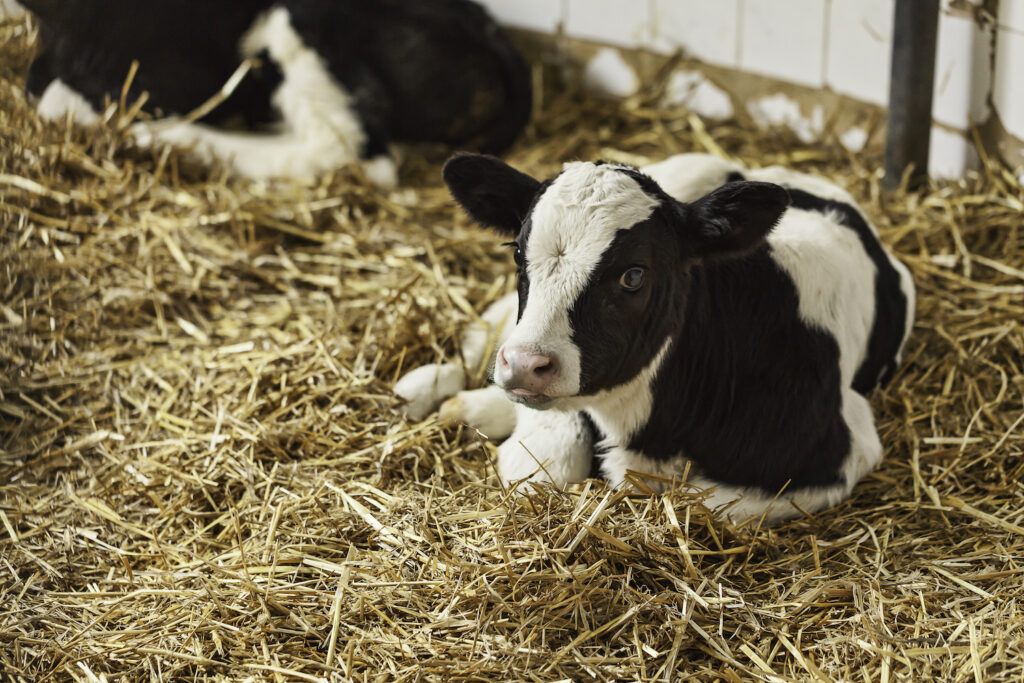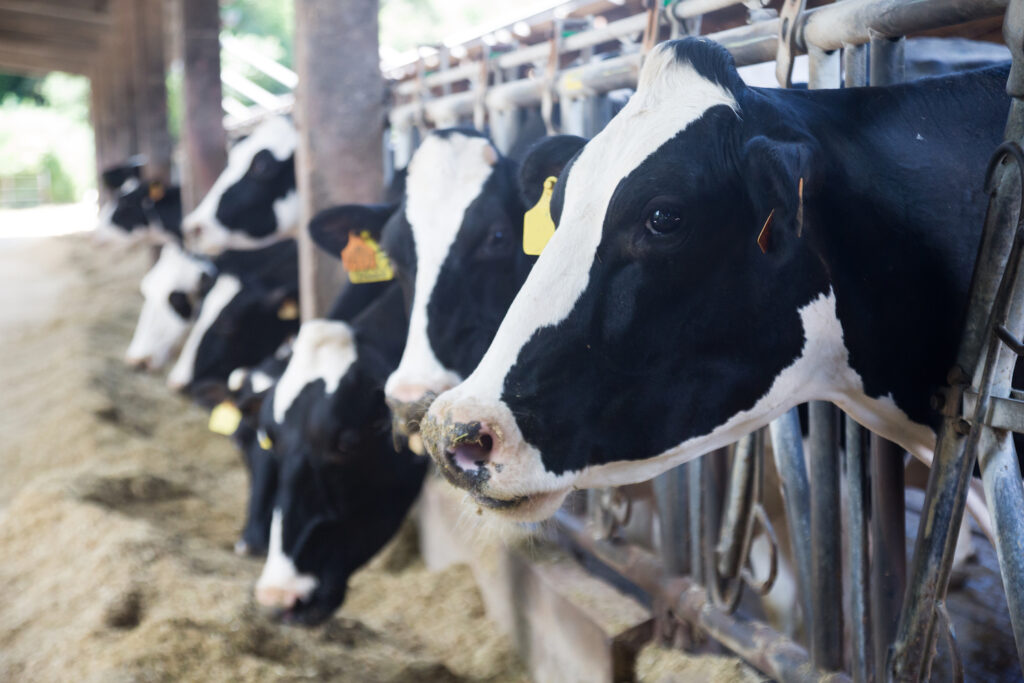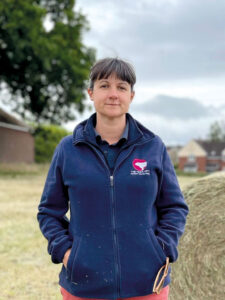Q&A: Respiratory health
10th October 2022
This month, Tonia Simms from Hampden Vets, part of the VetPartners Group, offers advice on bovine respiratory disease, or pneumonia, in housed cattle.
Q. What are some of the key risk factors for BRD?
A: Whether an animal succumbs to BRD is largely dictated by their immune system. We can think about the risk factors in three parts:
Immune function: This is often down to the first few hours of life and whether calves received sufficient high-quality colostrum.
Stress: Animals release the hormone cortisol in response to stressful stimuli, resulting in the ‘fight or flight’ response which boosts energy levels and reduces unnecessary functions – including the body’s inflammatory response and immune system. This potentially reduces the animal’s ability to fight off infectious pathogens.
At the point of housing there are often multiple stresses on animals:
- Weaning – removal from their dam
- Mixing groups – having to reinstate hierarchy
- Transport
- Entering a shed with new smells, environments etc.
All of these stressors are sufficient on their own to affect the immune system, however the result of multiple occurring at once, is far greater.
Challenge: Cattle sheds often have insufficient ventilation, meaning stale air containing pathogens stays within the building and infectious agents are readily spread between animals. The cumulative load of pathogens in the air increases as the air is rebreathed, resulting in a higher load than the immune system can cope with.
Even in sheds with sufficient ventilation, if they are mucked out infrequently the airspace can have a high load of urea from cattle urine. The respiratory tract has a highly efficient physical barrier to infection by pathogens: the mucocillary apparatus – but this is damaged by high levels of urea so it no longer works to prevent infection.
Nothing is easy, however – a lovely airy shed may be excellent for bigger cattle, but too draughty for smaller cattle, causing them to divert energy to keep warm. The lowest temperature a new-born calf can tolerate without a stress response is 13.4ºC (Robertson, 2020), so consideration should be given to extra feeds, housing or calf coats if the environment is colder than expected.

A lovely airy shed may be excellent for bigger cattle, but too draughty for smaller cattle, causing them to divert energy to keep warm.
Q. What steps should farmers be taking to minimise the risk to herds?
A: We should start as soon as the calf is born – ensuring all calves have sufficient, good enough quality colostrum within six hours of birth. Generally, we are talking about 10–12% of their body weight within the first 12 hours of life and as soon as possible. If the first dose is delayed longer than six hours, the calf’s ability to absorb the antibodies and energy in colostrum deteriorates.
Consider Johne’s: Older cows generally have better quality colostrum than heifers, although consideration should be given to the Johne’s disease status of older animals. Any that have tested positive or show clinical signs should be removed from the herd. Colostrum is easy to check for quality with a densimeter. Or your vet can take bloods from calves up to seven days old to ensure they have had sufficient passive transfer of proteins from colostrum to the calf.
Reduce stress: Where possible we need to reduce the impact of stressors. In my experience, farms often perform more than one procedure at once for convenience – e.g. weaning, housing and vaccinating. This compounding effect will have a massive impact on the calf’s ability to respond to pathogens, so any stressors should be separated.
An alternative method of traditional weaning could be considered, such as separating cows and calves in adjacent fields prior to housing, or gradually weaning them after housing by separating them for increasing periods each day.
Vaccination: While not a silver bullet, identifying the pathogens on your farm and vaccinating calves is a key component. There are a number of common pathogens we can vaccinate for, but not all will be present on your farm if you are a closed herd. If you are buying in stock, you may need to vaccinate for a larger range of pathogens.
At this time of year, prior to housing, there may not be many animals suffering with active pneumonia to sample pathogens. However, if you are a closed herd, it is likely that last year’s batch of calves (if not vaccinated) will act as a sentinel population for what is in your herd. These animals can be blood sampled to assess their antibodies and this data can be used to formulate a vaccination plan.
If you are buying calves in from different sources, it may be more prudent to use a blanket vaccination protocol to cover all pathogens and this should be discussed with your vet.
All vaccination courses should be completed two weeks prior to housing or weaning so that the animal has had time to respond to the vaccine. Administering a vaccine on the same day as housing is likely to result in the vaccine failing to produce a robust immune response as the animal has too much cortisol in the body.

The greatest challenge this year during housing is going to be lack of forage from having such a hot summer and using up winter rations.
Q. What impact do these diseases have on welfare and profitability?
A. Only 41% of the total cost of respiratory disease is attributable to vet spend and medicines – the greatest cost is the hidden effect on the animals’ subsequent health and growth.
There are various estimates on the cost of one case of respiratory disease, based on treatment costs, reduced feed efficiency and reduced growth rates. Obviously these are widely affected by the market prices at the time, but they were estimated in 2000 at between £120 for a moderate case and £243 for a severe case. Obviously, given inflation and grain prices, that estimate will obviously be a lot higher.
Q. What other health issues will be of concern for housed cattle this winter?
A. The greatest challenge this year during housing is going to be lack of forage from having such a hot summer and using up winter rations. If temperatures drop below the critical lowest temperature for calves, increased feed will need to be supplied to compensate for them having to keep themselves warm. Although this year this is going to be increasingly difficult.
Where possible try to source alternative feedstuffs such as brewer’s grains or sugar beet, to compensate for reduced amount of forage. In systems that rely heavily on forage to fatten animals, consider finishing them earlier on grains/by products.
Other winter diseases to consider are:
- Ectoparasites (lice and mange): normally controlled by a dose of ivermectin at housing. However we are also trying to reduce the use of anthelmintics, so consider delaying treatment until the parasites show themselves and then treat with a topical spot on.
- The same is true for liver fluke. Unless active infection is present on housing, which is unlikely given the dry weather this year, try not to use triclabendazole treatments; instead wait for 10 weeks after calving, test the animals for fluke infection and treat only if necessary.
- Scour in calves is at higher risk during the winter, although after the grazing season, their immune system should be competent to deal with most bacterial and viral infections. Keep an eye out for any animals slightly looser or not gaining weight, as coccidiosis may be present. Faecal samples can be taken to diagnose this and treat as appropriate.

